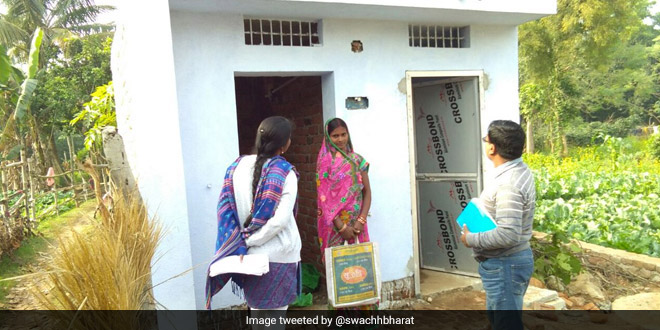New Delhi: The government on Wednesday launched the second phase of Swachh Bharat Mission (Grameen), which has a total outlay of Rs. 1,40,881 crore and is aimed at ensuring effective solid and liquid waste management in every panchayat. SBM (G) Phase-II will focus on sustaining the gains made in the first phase of the programme in the past five years in terms of toilet access and usage, and will ensure that no one is left behind, Union Jal Shakti Minister Gajendra Singh Shekhawat said.
He said the programme will be implemented from 2020-2021 to 2024-2025 in a mission mode with a total outlay of Rs. 1,40,881 crore. Mr. Shekhawat told reporters after the launch at the National Dissemination and Consultation Workshop on SBM (G) Phase-II,
Phase II will ensure that effective solid and liquid waste management (SLWM) is instituted in every gram panchayat of the country.
Also Read: Swachh Survekshan Grameen 2019: Here Are India’s Swachh Villages And Districts
He further said,
This will be a novel model of convergence among different verticals of financing. Of this, Rs 52,497 crore will be allocated from the budget of department of drinking water and sanitation. The remaining amount will be dovetailed from the funds being released under the 15th finance commission, MGNREGS and revenue generation models particularly for SLWM.
On February 19, the cabinet approved the second phase of the Swachh Bharat Mission, Prime Minister Narendra Modi‘s pet project focussed on sustainability of ODF and management of solid and liquid waste. Since the launch of the mission in 2014, over 10 crore toilets have been built in rural areas, Shekhawat said, adding, “over 5.9 lakh villages in 699 districts of 35 states/UTs have declared themselves open defecation free (ODF).”
The SLWM component of “ODF Plus” will be monitored on the basis of output-outcome indicators for four key areas: management of plastic wastes, bio-degradable solid wastes (including animal wastes), greywater and fecal sludge, he said.
Also Read: Recycling Plastic Waste Can Help Create More Jobs In India, Experts Believe
The SBM-II will continue to generate employment and provide impetus to the rural economy through construction of household and community toilets as well as infrastructure for SLWM like compost pits, soak pits, waste stabilisation ponds and material recovery facilities, he said.
As part of the National Dissemination and Consultation Workshop on SBM (G) Phase-II, a survey report on the impact of the mission on convenience, safety and self respect of women in rural India was released. The report claimed 93 per cent women feel safer from assault by not going out in the open to defecate, 91 per cent women save up to one hour of their day earlier spent on walking to defecation sites and 88 per cent women are proud to own a toilet.
Similarly 93 per cent women felt that they need not have to stop eating to control the urge to defecate anymore, 81 per cent women said they need not worry about privacy while changing menstrual hygiene material anymore, 93 per cent women no longer fear contracting infections by not going out in the open to defecate. The survey, done by the Bill and Melinda Gates Foundation and UNICEF during February, covered 6,993 women living in Bihar, Uttar Pradesh, Madhya Pradesh, Rajasthan and Maharashtra.
Also Read: Budget 2020: An Overview Of Budget Allocations For A Swasth And Swachh India




























